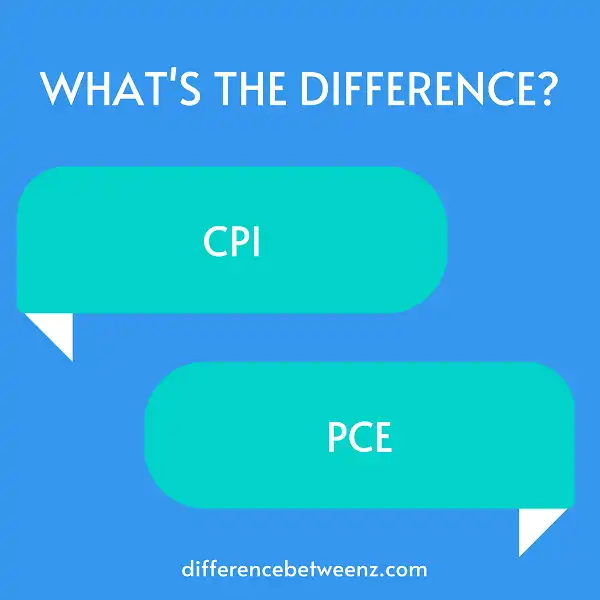The Consumer Price Index (CPI) and the Personal Consumption Expenditures (PCE) are two of the most commonly used measures of inflation. However, they measure inflation in different ways, and can therefore produce different results. In this blog post, we will discuss the differences between CPI and PCE, and what implications they have for investors and consumers.
What is CPI?
- CPI, or the Consumer Price Index, is a measure of the average change in prices over time that consumers pay for a basket of goods and services. The CPI is used to track inflation, as well as to help governments and businesses make economic decisions.
- The CPI can also be used to adjust social welfare programs, such as Social Security, which are based on the cost of living. CPI is released monthly by the Bureau of Labor Statistics. CPI is calculated using a formula that weights the prices of different items in the CPI basket according to their importance in the average consumer’s budget.
- The weights are based on data from the Consumer Expenditure Survey, which is conducted by the Bureau of Labor Statistics. CPI is then calculated by taking the prices of all items in the CPI basket and averaging them. CPI is reported in terms of an index with a base year.
- The CPI for any given year is the CPI for the base year multiplied by the index for that year. For example, if CPI was 100 in 2020 and 102 in 2021, then CPI increased by 2% from 2020 to 2021.
What is PCE?
PCE, or personal consumption expenditures, is a measure of spending by individuals on goods and services. It includes spending on durable goods, such as cars and appliances; nondurable goods, such as food and clothing; and services, such as healthcare and education. PCE is the largest component of gross domestic product (GDP), accounting for about 70% of total spending. PCE is often used as a measure of economic well-being, as it reflects the amount of money that households have available to purchase goods and services. PCE data are released monthly by the Bureau of Economic Analysis (BEA).
Difference between CPI and PCE
CPI and PCE are two measures of inflation in the United States. CPI, or the Consumer Price Index, is a measure of the average change in prices paid by consumers for a basket of goods and services. PCE, or the Personal Consumption Expenditures price index, is a measure of the prices paid by consumers for goods and services. CPI is released monthly by the Bureau of Labor Statistics, while PCE is released quarterly by the Bureau of Economic Analysis. CPI generally increases at a faster rate than PCE, due to CPI’s inclusion of a wider range of goods and services, as well as its treatment of housing costs. CPI also weights items according to their importance in the consumer basket, while PCE weights items according to their overall share of spending. As a result, CPI is generally considered to be a more accurate measure of inflation than PCE.
Conclusion
Inflation is a key economic indicator that is closely watched by the Federal Reserve. The Consumer Price Index (CPI) and Personal Consumption Expenditures (PCE) are two measures of inflation. The CPI looks at changes in prices for a basket of goods and services, while the PCE looks at all spending by consumers on goods and services. There can be differences between the CPI and PCE due to what is included in each measure or how the data is collected. For example, the CPI may not include housing costs, which would be included in the PCE. The Fed prefers to use the PCE as its measure of inflation because it includes more data. However, both measures give an indication of price changes over time.


